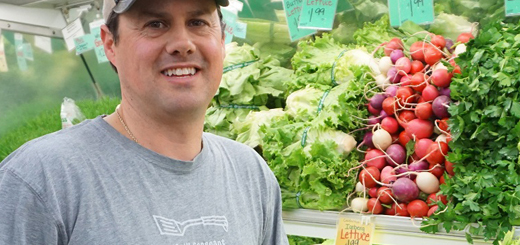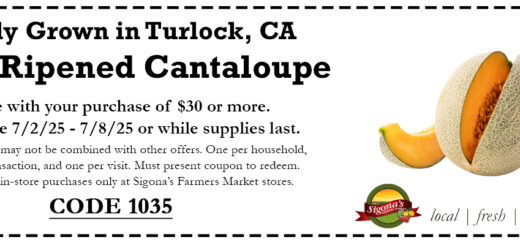To Hass or not to Hass: California Avocados are in and fantastic at Sigona's
To Hass or not to Hass
Learn about the differences in two avocado varieties now available at Sigona’s: the Fuerte and the Hass.
By Robbie Sigona
California avocados are practically a staple for many homes in our state due to abundance, near year-round availability and versatility. Making a dish, such as an omelet or sandwich, “California-style” usually means simply adding in a slice of creamy avocado to the ingredient list.
Most shoppers are familiar with the Hass avocado; it is, after all, the most prevalent variety grown and sold in California, and the one purists say is best for making guacamole. The rich & buttery Hass is easy to spot because of its pebbly-textured skin turns from green to purplish-black when ripe. It’s also a sort of squatty, oval shape while some other varieties, such as the Fuerte, are pear shaped.
We currently carry both Hass and Fuerte avocado varieties, and while both are essentially the same inside with their light green, creamy & sweet flesh, it’s important to know the differences between the two to guarantee you get a good avocado.
Most have heard the phrase, “you can’t judge a book by its cover,” but when selecting an avocado, giving the outside the once over is a good place to start. The graphic below shows the simple, yet pertinent differences between the Hass and the Fuerte.
Anyone who unknowingly selects a Fuerte and waits (and waits, and waits) for the skin to darken is in for a disappointment. The skin of a Fuerte stays green when ripe. Furetes aren’t usually stocked at most grocery stores because their thin skin makes them too perishable. On the other hand, the thick-skinned Hass, a variety developed in the 1930s, has a great shelf life.
 Did you know there are nearly 500 avocado varieties? According to the California Avocado Commission, just a handful of those 500 varieties are grown commercially; they are the Bacon, Fuerte, Gwen, Hass, Lamb Hass, Pinkerton, Reed and Zutano. The familiar Hass variety is the leader of the pack, representing nearly 95 percent of California’s total crop.
Did you know there are nearly 500 avocado varieties? According to the California Avocado Commission, just a handful of those 500 varieties are grown commercially; they are the Bacon, Fuerte, Gwen, Hass, Lamb Hass, Pinkerton, Reed and Zutano. The familiar Hass variety is the leader of the pack, representing nearly 95 percent of California’s total crop.
Most people prefer the California avocado over its Florida counterpart, and the reason is plain: taste and creaminess. Most Florida avocados have only half the fat content of California avocados, so they’re not nearly as rich or creamy. They also have a slight sweetness to them, which Hass lovers are not used to.
Avocados are a staple fruit in our stores, and because I grew up in our family market, you can believe me when I say I’ve eaten my fair share. It wasn’t until I was older that I became interested in the health benefits of avocados, especially when my wife and I became parents. We learned from my Uncle Carmelo that he raised his daughter Monica on raw food when she was a baby, and the nutrition-packed avocado was her favorite.
Though they’re high in calories, avocados can help you avoid weight gain if used in moderation in place of other high-fat or high-salt condiments like cheese or mayonnaise.
Of all varieties, the Hass contains the highest proportion of fat – “good fat,” that is! Avocados are a great source of monounsaturated fat which helps raise HDL (good) cholesterol and lower the LDL (bad) type. Additionally, alligator pears, as they’re sometimes called in the produce business, are also a great source of protein, essential acids and heart-protective compounds such as Vitamin E, potassium, folate and fiber. They really are a superfruit.
But wait, there’s more!
Among findings from a 2005 research project completed at Ohio State University found that eating avocado with salsa or with a salad increased absorption of carotenoids (powerful antioxidants, protecting the cells of the body from damage caused by free radicals) from the vegetables in the dish by as much as 15 times.
Did you ever think you’d know so much about the avocado?
Californians are lucky to have great avocados available nearly nine months out of the year. For the three months of the year when Californian avocados aren’t available, Chilean avocados are an acceptable substitute.
Whether you’re stocking up now for your homemade California-style BLTAs (Bacon, Lettuce, Tomato & Avocado sandwich) or for Cinco de Mayo guacamole, remember to check our signage for the variety of avocado you’re buying. We clearly mark the Hass avocados and the Fuertes, and are also sure to adhere the orange Ripe stickers to the fruits that are ready to eat that day. Make sure to check the rest of our blog for more avocado selection tips and avocado recipes, too.











